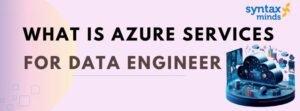Data engineering is a crucial field within data science and analytics, focused on designing, building, and maintaining the systems that enable the collection, storage, and processing of large volumes of data.
Here’s a detailed overview of data engineering, its key components, and skills required.
Table of Contents
ToggleKey Components of Data Engineering
- Data Collection
– Sources: Gathering data from various sources like databases, APIs, web scraping, and streaming data from IoT devices.
– Tools: Apache Kafka, Apache NiFi, and Airflow for orchestrating data pipelines.
- Data Storage
– Databases: Choosing the right storage solutions based on use cases (SQL vs. NoSQL).
– Data Warehousing: Systems like Amazon Redshift, Google BigQuery, and Snowflake that enable analytical querying on large datasets.
– Data Lakes: Storing raw data in its native format (e.g., Amazon S3, Azure Data Lake).
- Data Processing
– ETL (Extract, Transform, Load): The process of extracting data from sources, transforming it into a usable format, and loading it into storage systems.
– Batch vs. Stream Processing: Technologies like Apache Spark (batch) and Apache Flink (streaming) for processing large datasets.
- Data Quality and Governance
– Ensuring data integrity, consistency, and quality through validation and cleansing processes.
– Implementing data governance practices to manage data access, privacy, and compliance.
- Data Integration
– Combining data from different sources to provide a unified view for analytics and reporting.

Key Skills for Data Engineers
- Programming Languages
– Proficiency in languages such as Python, Java, or Scala for building data pipelines and ETL processes.
- Database Management
– Knowledge of SQL for relational databases and familiarity with NoSQL databases like MongoDB or Cassandra.
- Big Data Technologies
– Understanding of frameworks like Apache Hadoop and Apache Spark for handling large datasets.
- Cloud Computing
– Knowledgeable in cloud platforms (AWS, Azure, Google Cloud) and their corresponding data services.
- Data Pipeline Orchestration
– Experience with tools like Apache Airflow or Luigi for scheduling and managing workflows.
- Data Warehousing
– Knowledge of data warehousing concepts and tools (e.g., Redshift, Snowflake).

TOOLS :
Data Engineering Tools
- Data Collection
– Apache Kafka: For building real-time data pipelines and streaming applications.
– Apache NiFi: For automating the flow of data between systems.
– Logstash: Part of the Elastic Stack for collecting and processing logs.
- Data Storage
– Relational Databases:
– PostgreSQL: A powerful open-source relational database.
– MySQL: A widely used open-source relational database.
– NoSQL Databases:
– MongoDB: A document-oriented NoSQL database.
– Cassandra: Designed for high availability and scalability.
– Data Warehouses:
– Amazon Redshift: A managed data warehouse service.
– Google BigQuery: A serverless data warehouse.
– Data Lakes:
– Amazon S3: Object storage for unstructured data.
– Azure Data Lake Storage: Designed for extensive data storage needs.
- Data Processing
– ETL Tools:
– Apache Griffin: A tool for maintaining data quality in big data ecosystems.
– Talend: An open-source ETL tool.
– Batch Processing:
– Apache Spark: For large-scale data processing.
– Apache Flink: For batch and stream processing.
– Stream Processing:
– Apache Beam: For defining batch and streaming data pipelines.
- Data Quality and Governance
– Great Expectations: For data validation and testing.
– Apache Griffin: A data quality solution for big data.
- Cloud Data Platforms
– AWS Glue: A managed ETL service.
– Azure Data Factory: For creating data-driven workflows.
- Monitoring and Logging
– Prometheus: For monitoring systems.
– Grafana: For data visualization and monitoring.
- Data Visualization
– Tableau: For creating interactive dashboards.
– Power BI: Microsoft’s business analytics tool.

Books
- “Designing Data-Intensive Applications” by Martin Kleppmann
– Focuses on the principles of building scalable, maintainable data systems.
- “Data Engineering with Python” by Paul Crickard
– Provides practical guidance on building data engineering pipelines using Python.
- “The Data Warehouse Toolkit” by Ralph Kimball and Margy Ross
– A comprehensive guide on dimensional modeling and data warehouse design.
- “Building a Data Warehouse” by Vincent Rainardi
– Offers a practical approach to building data warehouses, with real-world examples.
- “Streaming Systems” by Tyler Akidau, Slava Chernyak, and Reuven Lax
– Discusses the principles of stream processing and the architecture of streaming systems.
- “Fundamentals of Data Engineering” by Joe Reis and Matt Housley
– Covers the foundational concepts and skills needed for data engineering.
- “Data Science for Business” by Foster Provost and Tom Fawcett
– While not strictly about data engineering, it provides insights into how data can be used for business decisions.

Conclusion
Mastering the tools and concepts outlined in these resources will give you a strong foundation in data engineering. Consider beginning with hands-on projects to apply your knowledge and strengthen your skills.
Data engineering is a rapidly growing field with a wide range of career opportunities and projects that you can undertake to build your skills and portfolio. Here’s an overview:
Career Opportunities in Data Engineering
- Data Engineer
– Accountable for designing and building data pipelines, overseeing databases, and maintaining data quality.
- ETL Developer
– Focuses on the extraction, transformation, and loading (ETL) of data between systems.
- Data Architect
– Designs the overall structure of data systems, ensuring scalability and efficiency.
- Big Data Engineer
– Works with large-scale data processing frameworks like Hadoop and Spark.
- Cloud Data Engineer
– Specializes in deploying and managing data solutions on cloud platforms (AWS, Azure, GCP).
- Machine Learning Engineer (with Data Engineering skills)
– Combines data engineering and machine learning to build and deploy predictive models.
- Data Operations Engineer
– Focuses on the operational aspects of data management, ensuring data reliability and performance.

Key Skills Required
– Proficiency in programming languages (Python, Java, Scala)
– Strong understanding of databases (SQL and NoSQL)
– Experience with data processing frameworks (Apache Spark, Flink)
– Familiarity with cloud services (AWS, Azure, Google Cloud)
– Knowledge of ETL tools (Apache Airflow, Talend)
– Data modeling and warehousing concepts
Projects for Data Engineering
- Data Pipeline Development
– Build a pipeline that extracts data from various sources (APIs, databases), transforms it, and loads it into a data warehouse or lake.
– Tools: Apache Airflow, Apache Kafka, Amazon Redshift.
- Real-Time Data Processing
– Create a real-time data processing application using streaming data from a source (like Twitter) and process it using Apache Spark Streaming or Apache Flink.
– Tools: Kafka, Spark, Flink.
- Data Warehouse Implementation
– Design and implement a data warehouse schema for a business case (e.g., sales data) and populate it with ETL processes.
– Tools: Google BigQuery, Snowflake, PostgreSQL.
- Data Quality Framework
– Build a framework for validating data quality, including checks for completeness, accuracy, and consistency.
– Tools: Great Expectations, Apache Griffin.
- ETL Automation
– Automate an ETL process that regularly pulls data from multiple sources, transforms it, and loads it into a target database.
– Tools: Talend, Apache NiFi.
- Data Lake Setup
– Create a data lake using cloud storage services and implement a method for querying the data (e.g., using AWS Athena).
– Tools: Amazon S3, AWS Athena, Apache Hive.
- Dashboard Creation
– Build a dashboard that visualizes data insights from a dataset, focusing on performance metrics for a business use case.
– Tools: Tableau, Power BI, or Looker.

Getting Started with Projects
– Kaggle Datasets: Use publicly available datasets to practice building data pipelines and conducting analysis.
– GitHub: Share your projects and collaborate with others to build your portfolio.
– Personal Projects: Identify a personal interest (like sports, finance, or healthcare) and create a data engineering project around it.
Conclusion
Data engineering offers a wealth of career opportunities and the chance to work on impactful projects. By building relevant skills and completing projects, you can enhance your employability and expertise in this dynamic field.


